Vitamin B Sources – What can help protect you from air pollution?
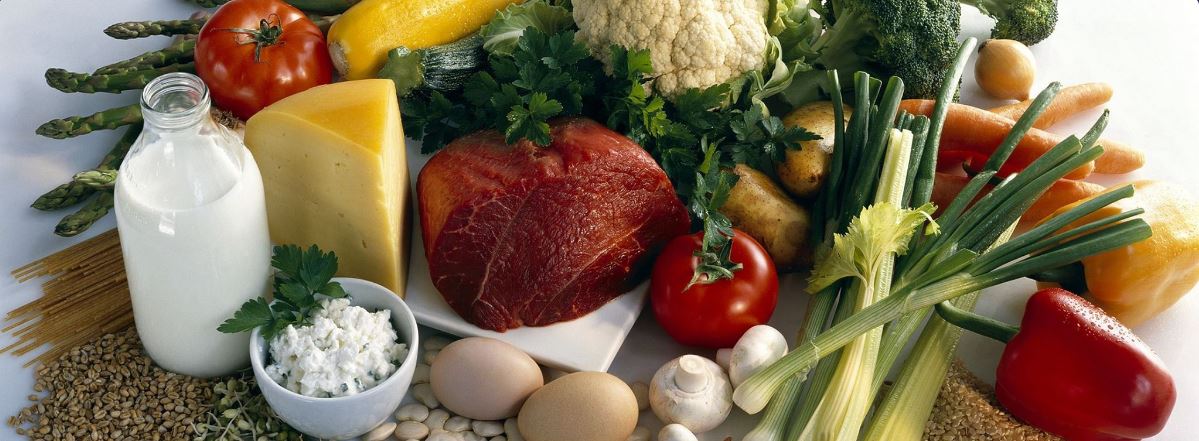






Before The Flood Is A Must See

Recently, a remarkable documentary called 'Before The Flood', was released to explain how real climate change is. It explicitly describes the causes and effects of the earth's production, consumption, and emissions. Leonardo Di Caprio is the producer and interviewer throughout the film. Amazing photography and words depict Leonardo's trip around the world seeing and speaking to numerous scientists, activists and politicians.
Connecting some of the largest corporations to the investment in their products vast destruction of our land, DiCaprio pursues interviews with a range of world leaders and innovators, including Barack Obama, Pope Francis, Ban Ki-Moon and Elon Musk, to discuss factors that threaten Earth's sustainability, while also taking aim at global warming skeptics.
See the movie on YouTube free! It may only be available for a short time!
EDIT*
The movie was available for free on YouTube but has since been removed.
Here are some of the quote's that left a lasting impression on us:
"If we're gonna fight climate change effectively, we have to start by acknowledging that most of our economy is based on fossil fuels. Oil powers most of the transportation sector, coal and natural gas power most of the electricity".
"Almost everything we do releases CO2"
"Temperatures are rising, coral reefs are dying, and not since a meteor hit the earth 65 million years ago have so many species of plant and animals become extinct"
"Hundreds of cubic kilometers of ice have melted in less than 5 years"
"97 percent of climate scientists, our climate is changing due to fossil fuel burning"
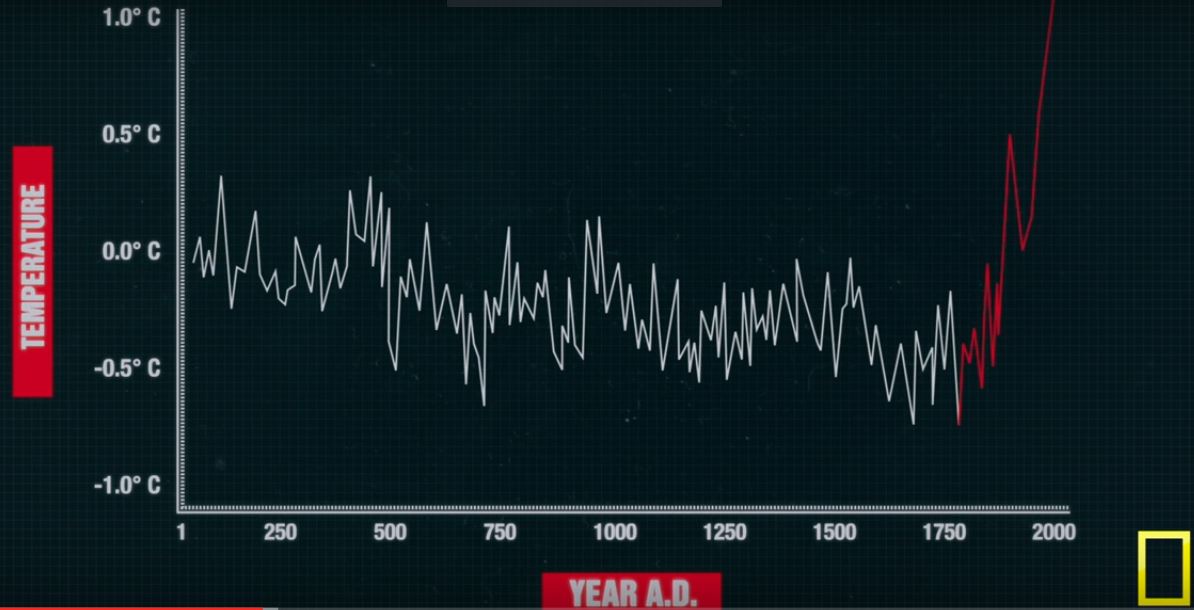
"All of that hatred and fear is in fact organized and funded by fossil fuel interests like the Koch brothers finance, a very large echo chamber of climate change denialism"

"These are front groups that are funded by corporate interests"
"Due to our release through factories and automobiles, every year more than 6 billion tons of carbon dioxide are released"
"Coal is cheap"
"China has recently surpassed America as the number 1 world's polluter"
"Chinese media talks about climate change on a regular basis"
"China's got some of the biggest wind and solar companies in the world now"
"China is still heavily relying on fossil fuels but they seem to be transitioning to renewable's much faster than anyone anticipated"
"India is the world's third largest emitter, yet the country is struggling with massive power shortages and rolling blackouts"
India is a country where "energy access is as much a challenge as climate change"
"There are 300 million people without access to electricity in India... that's the entire population of the U.S.!"
"700 million households cook with biomass in India... if they switched to coal the earth would fry"
"The U.S. has been the biggest emitter of greenhouse gases in history"
"There are over a billion people out there without electricity and they want lights, they want heat, they want the lifestyle that we've had in the United States"
"Reefs as we know them are going to virtually disappear"
'Oceans are a buffer, that absorb about 1/3 of the C02 that we dump'
"Decades and decades of the forests breathing in the carbon storing it in the trunks and the leaves and the organic matter. Those carbon emissions are being held safe for us until we clear them and light them on fire. It acts like a carbon bomb and releases massive carbon emissions back into the atmosphere"
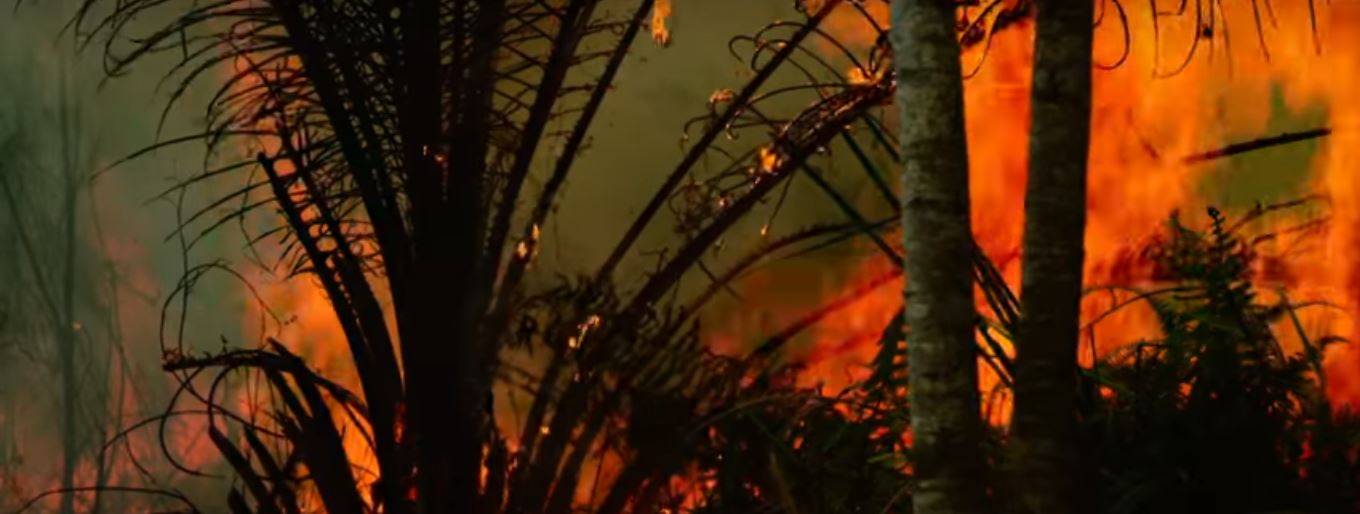
"Palm oil plantations grow the cheapest vegetable oil in the world. Its in cooking oil's, processed foods, in cosmetics, detergents, making corporations tremendous profits"
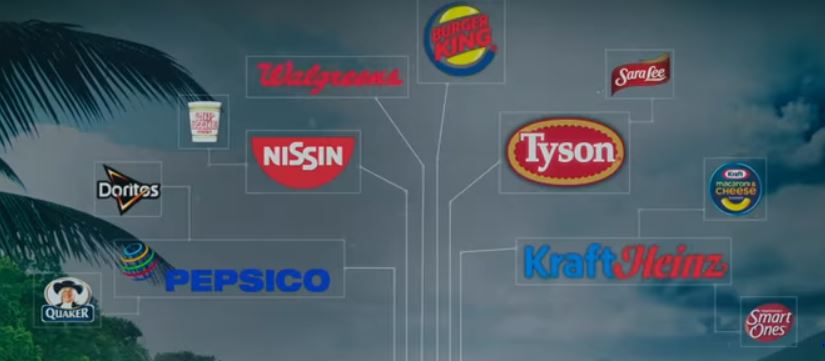
"Beef is one of the most inefficient uses of resources"
"Every molecule of Methane (CH4) is equivalent to 24 molecule's of CO2" -'47% of the United States' land is used for food production. 70% of the 47% is used for beef production'
"The things that we actually eat, like fruit, is 1%"
"About 10% of total U.S. emissions are from beef"
"Beef requires 50x as much land as potatoes"
"Just by switching from eating chicken to eating beef, you will have eliminated 80% of what you emit"
"You would only need 100 Tesla Gigafactories to produce all of the power consumption of the world"
"Politicians call them our elected leaders are really our elected followers"
"What makes scientists so nervous is that we can reach a point where earth takes over and starts reinforcing warming. This is what we call the tipping point… Greenland is melting on its entire surface to a point where the white surface becomes a dark surface. Because the sun cannot reflect back the whole surface starts to melt"
"Denmark produces 100% of its electricity from wind"
"Sweden is now the first fossil free nation"
'The Paris agreement is a step in the right direction but it does not mention carbon tax. There are no penalties, there are no enforcement provisions'
"The peace talks in Paris are nowhere near enough for what the scientists tell us we have to do eventually to solve this problem. But if we can use the next 20 years to apply existing technologies to reduce carbon emissions and then start slowly turning up the dials as new technologies come on line, more and more ambitious targets each year. Completely reversing the warming that now is inevitable can stop it before it becomes catastrophic" -Obama
"The ice is melting the earth is warming the sea level is rising"
"As a U.N. Messenger of Peace I have traveled all over the world for the last two years seen cities like Beijing choked by industrial pollution, boreal forests in Canada that have been cut clear, rainforests in Indonesia that have been incinerated. In Greenland and in the Arctic I was astonished to see that ancient glaciers are rapidly disappearing well ahead of scientific predictions"
"I just need a minute to breathe"
We need to stand together as one world, and stop polluting the earth that we stand on. If we think before we do, we can turn global warming around and take a fresh breath of air. We really need it.
Practice what you preach. If you can, show others how to take care of the environment around you.
While we take positive actions, step by step, lets not forget to protect ourselves. Protect your loved ones the best you can. Provide them with clean air and add years to their life.
All of the media and quotations used in this article can be found in the YouTube video posted above. The producer is Leonardo Di Caprio. It can be found on National Geographic's website here: http://channel.nationalgeographic.com/before-the-flood/videos/before-the-flood/
How Your Motorbike Pollutes
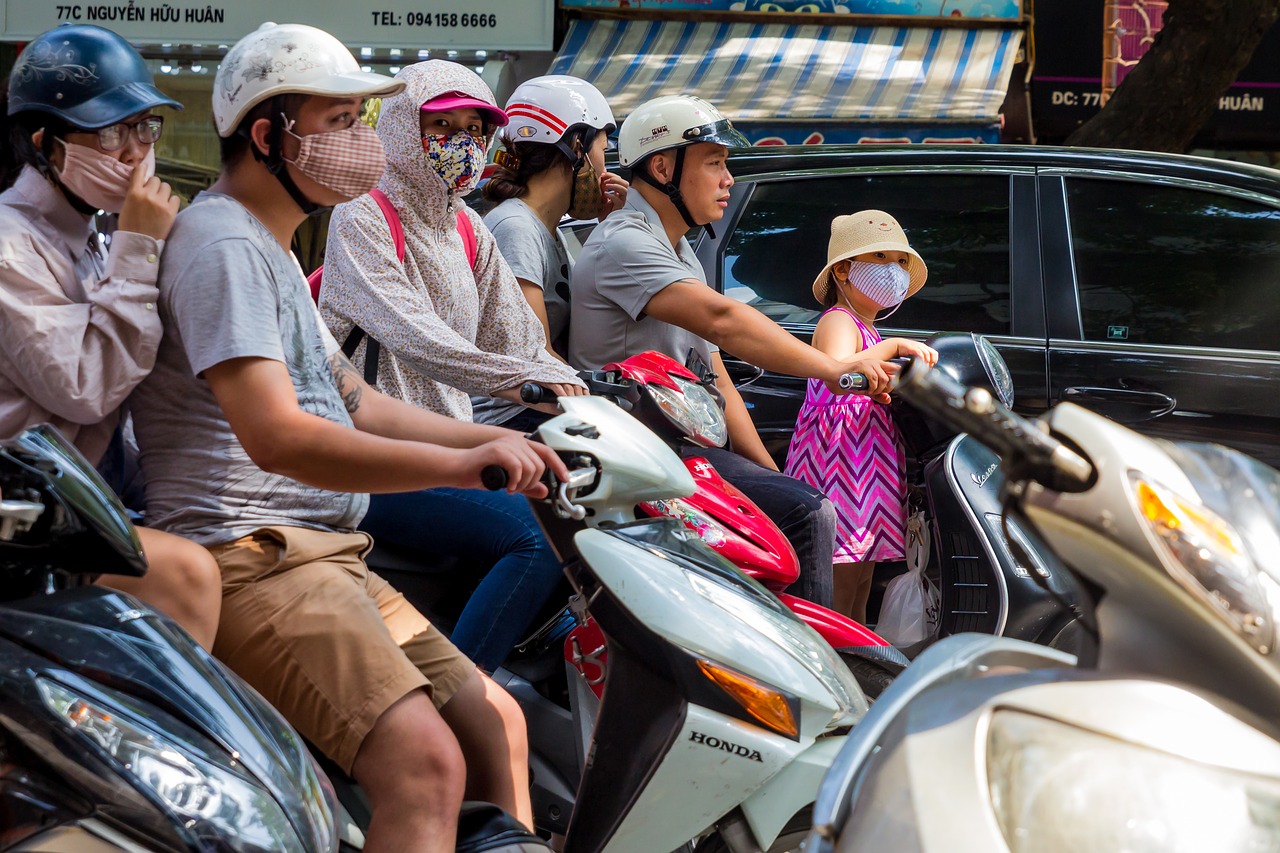
How Your Motorbike Pollutes
When an engine is running, it looks like this:

Blue is a gas-air mixture, red is an exploding gas-air mixture, and black is exhaust
In many places around the world, the majority of the population likes the idea of saving money, and therefore puts off the amount of money and time spent on the maintenance of their vehicles.
We’ve seen a lot of motorbikes that have halted due to their owners completely forgetting to change oil.
Motorcycles and scooters have worse emissions than cars! Can you believe it?!
This is because they have worse pollution control standards, so although they emit less CO2, the other greenhouse gasses they emit count for more than the CO2 emitted by cars. Even though two-wheelers are better than single-driver cars in urban areas (slower speed zones), they are far worse on highways.
Comparing a single driver two-wheeler to a full car of course shows that a car emits less per person.

Amount of Car VS Motorcycle Pollution in grams of CO2 source.
Looking at the amount of emissions produced in manufacturing, surprisingly, a $15,000 car VS a $15,000 two-wheeler, two-wheelers produce a lot more CO2 than cars. This is due to the auto industry improving emissions control technologies while the motorcycle industry has not. Overall, cars have both more sophisticated fuel systems and better emission controls than motorcycles.
Anyways! Back to how your motorbike is polluting the environment.
First of all, motorbikes produced in Asia have extremely little regard to emissions. There are no stringent emissions testing before they are sold. Second, motorbikes and scooters are being produced for as low as possible. People want fast and strong vehicles, not those that have the environment in mind. Third, people only replace things when they break. A lot of scooters don’t have oil lights, so forgetting to change oil, or simply leaving it too long can really harm the environment and people living in it.
Fuel Quality:
It is widely known that regulations for the quality of fuel are lower in many developing countries in comparison to those in industrialized nations.
Estimates indicate that there are currently about 1.2 to 1.3 million automobiles and 33 million motorbikes in Vietnam. With Vietnam’s rapid urbanization and sustained high economic growth, these vehicles are expected to increase substantially in the near future. The vehicle emissions and fuel quality roadmap can greatly ensure that future automobiles and motorcycles will be cleaner.
Maintenance
The frequency at which we maintain our motorbikes is extremely important. You should check your motorbikes manual (online if not on paper) to see how often you should do standard maintenance.
For example, you should change oil every 1000 kilometers. You should inspect (clean, adjust, lubricate, or replace if necessary) the fuel line, throttle operation, spark plugs, and engine idle speed every 4000 kilometers. Beware that this schedule is for a very simple semi-automatic. For older bikes, you should maintain more frequently, and for newer bikes, you should check your manual.
Brakes, oil and tires the 3 most important things to maintain on your motorcycle.

Brakes
Brakes should be replaced as soon as you feel like you cannot brake as well as you used to, or as soon as you hear a scratching sounds coming from them. Disc brakes start to hiss when you are not using them at all if they’re getting too thin.
Oil
The right type of oil for your engine should be used. Your manual should state if your bike uses synthetic or semi-synthetic oil. The higher quality (and thus more expensive) oil you use should ensure that your engine lasts a long time.
Tires
Your tires are the only thing that connects you to the tarmac. To make sure your tires are good, inspect the treads for depth. Your front tire will be used more quickly (and thus should be replaced more often) because you turn it more frequently. Motorcycle/scooter tires flatten in the middle as they’re used more, which makes it more difficult to make turns without slipping out.
Air Filter
In polluted areas, the air filter on your bike needs to replaced more often than on clean roads. Extreme amounts of dust are filtered by your air filter, and the filter needs to be cleaned or replaced to stop from dust entering into the engine.
Chain/Drive Belt
Chain’s on semi-automatic or manual motorbikes and scooters need to be maintained regularly. They should be lubricated and kept tight. In automatic scooters, you have to monitor the rubber belt that turns the wheel. In most bikes it is located under the air filter. The drive belt doesn’t need to be replaced frequently, unless it is showing cracking (around every 4000km). If it is slipping (when accelerating you don’t move forward like you used to), it needs to be replaced. There are variator rollers (or ceramic bearings) that allow the drive belt to move faster and slower depending on your required acceleration. These rollers allow the belt to move smoothly, and they need to be replaced more frequently than your belt. Inside this same housing is your clutch. A clutch has pads that wear down over time. It is an expensive part but you do have to change this to make sure you can accelerate as you’re supposed to. You can see all of this in the following link that shows how to replace everything in your variator housing.
Shocks
For a comfortable ride, your shocks need to be maintained every 10,000km or so by replacing the oil in the shocks. You could also buy a new pair of shocks after your bike has ran 30,000km or so with the stock ones. Newer shocks have better mechanics and make for a much smoother ride.
More on Fuel in Vietnam
Euro 4 emission standards VS Euro 5 emission standards:
Euro 3 standard fuel is still in circulation in Vietnam. It is named RON 92 petrol. In comparison, the newer Euro 5 standard Biofuel requires better petrochemical filtering technology, and therefore is more expensive.
The European Emission Standards define the acceptable limits for exhaust emissions of vehicles in the EU. The stages are typically referred to as Euro 1, Euro 2, Euro 3, Euro 4, Euro 5 and Euro 6 for Light Duty Vehicle standards.
In Vietnam, under the September 1st, 2011 roadmap, automobiles are required to comply with Euro 4 emission standards by January 1, 2017 with further tightening to Euro 5 emission standards starting January 1, 2022. Vietnam will skip Euro 4 standards and move ahead to Euro 5 Standards in 2022.
Motorcycles manufactured, assembled or newly imported will be required to comply with Euro 3 emission standards beginning January 1, 2017.
Phan Quynh Nhu, Secretary-General of the Vietnam Clean Air Partnership (VCAP), says that the leading cause of air pollution in Vietnam is from transport, particularly engine-run vehicles, which led to the need for strict limits on emissions. (Source)
Problem
The problem of air pollution in cities of newly developed and developing countries is mainly created by a rapid growth in the use of motorcycles and passenger cars as traffic tools. In comparison to passenger cars, information about motorcycles’ hardware controls on emissions, including catalyst, engine design, and fuel composition, is scarcely available. Motorcycle tail-pipe emissions are affected by fuel type, engine type, and catalyst. Regulatory agencies, motorcycle industries, and fuel industries should further explore optimal control strategies to reduce motorcycle-related air pollution. (Source)
Scandal
In 2015, the Volkswagen emissions scandal involved revelations that Volkswagen AG had deliberately falsified emission reports by programming engine management unit firmware to detect test conditions, and change emissions controls when under test. The cars thus passed the test, but in real world conditions, emitted up to forty times more NOx emissions than allowed by law.[22] An independent report in September 2015 warned that this extended to “every major car manufacturer”,[23] with BMW, and Opel named alongside Volkswagen and its sister company Audi as “the worst culprits”,[23] and that approximately 90% of diesel cars “breach emissions regulations”.[23] Overlooking the direct responsibility of the companies involved, the authors blamed the violations on a number of factors, including “unrealistic test conditions, a lack of transparency and a number of loopholes in testing protocols”. (Source)
Solution
The only good way forward is to take responsibility for manufacturing, owning, and taking care of our vehicles so that the environment is not harmed.
Why Some People Almost Always Wear A Pollution Mask

Wearing a pollution mask was never on my list of things to do. Until it became necessary. In Asia, people have become so accustomed to wearing a mask that you spot people doing anything and everything, with their pollution masks on.
Similar to the time I was on a flight from Hanoi to HCM city and a man sitting next to me wore his motorbike helmet from the check-in till long after exiting the plane, a pollution mask becomes so normal that it’s worn everywhere.
Air Pollution

Air pollution in big cities is the first and foremost reason to wear a pollution mask.
People try to block all pollution in and out of buildings.
Burning
At a certain time of year, farmers burn their expired crops to make way for fertile soil and successful plantation. This is the same time of year many areas are covered in smog.

Allergies
For many people sensitive to allergies, filtering out pollen and asthma, which are caused by airborne pollen during the spring and throughout the year gives them some fresh air to breathe.
Spreading
A public act of consideration for strangers. The person wearing  the mask is sick, and cannot stay at home. Out of respect for others the person is keeping their cold or virus to themselves! How very nice of them.
the mask is sick, and cannot stay at home. Out of respect for others the person is keeping their cold or virus to themselves! How very nice of them.
Aesthetics
Supposedly in Korea, people where masks for aesthetics. Women wear masks when they aren’t wearing makeup, or if they’re still recovering from cosmetic surgery.
Industries like energy require coal and nuclear power plants that churn out electricity in active coal-fired steam stations burn coal to produce electricity. This causes a lot of PM2.5 particle pollution in and around cities. People who have learnt that these particles and gasses can be very harmful for their lungs decide to wear a high quality filtered mask. Most people are still wearing fabric masks or surgical masks which often do not seal or remove pollutants well. Now people are starting to get higher quality filters which they know will help them to block most of the pollution.
Did you learn something new?
Subscribe to our Facebook or newsletter to find out more!
How A City Becomes Polluted

Is Hanoi Heading Towards "Airpocalypse"?
People are flocking to city centers all over the world, in search of better jobs in urban environments. For the people who design the roads and buildings in cities this requires significant planning. Without planning for the future, expensive mistakes can deter growth and have negative impact on housing, sanitation, education, and employment. A city's narrow streets and high tax on cars leads to an increased number of motorbike owners. This has recently led to pollution becoming dangerous to people’s health.
Emissions of all types are found in many city's air, including fine particles which lead to a large number of deaths per year. Particles (PM) as small as 2.5 micrometers lodge deep in our lungs, clogging arteries, making it harder to breathe. This irreversible effect is the reason scientists have been studying how safe it is to live in such an environment.
For example in Vietnam, it has been reported that 70% of Hanoi’s air pollution comes from the endless stream of traffic, reported by Vietnam’s Center for Environmental Monitoring. Hanoi was once a capital filled with bicycles, and only in the 1990's, motorbikes were introduced. Now almost everybody has a motorcycle, and more people are moving into the city, as Hanoi grows larger. Construction needs to meet the demand of more citizens, and thus large apartment buildings are finding their place.
Official data shows that there are now "5.3 million motorbikes and 560,000 cars in Hanoi, with figures set to increase at 11% every year for motorcycles and 17% for cars". Khuat Viet Hung, vice chairman of the National Traffic Safety Committee said that around 44,000 people a year die from air pollution and related illnesses.
As the government attempts to build infrastructure to support the growth, more an more motorbikes are being bought. A new railway with 8 lines is due in Hanoi by 2020, which is grinding along slowly, leaving less space for motor vehicles to get by, causing ever worsening traffic congestion. “Frequent and prolonged traffic congestion is the main contributor to the increasing air pollution level," said Professor Le Huy Ba, head of the Institute for Science, Technology and Environment Management under HCMC’s University of Industry. This is followed by powerplant's
Can Hanoi curb the emissions by strict regulation of environment effecting discharge coming out of industries, while regulating growing traffic concerns as well?
What do you think?
Leave a comment below.
Sources
Yeh, Ray. 19 Apr 2016. Web. http://www.channelnewsasia.com/news/asiapacific/airpocalypse-soon-hanoi/2707674.html

